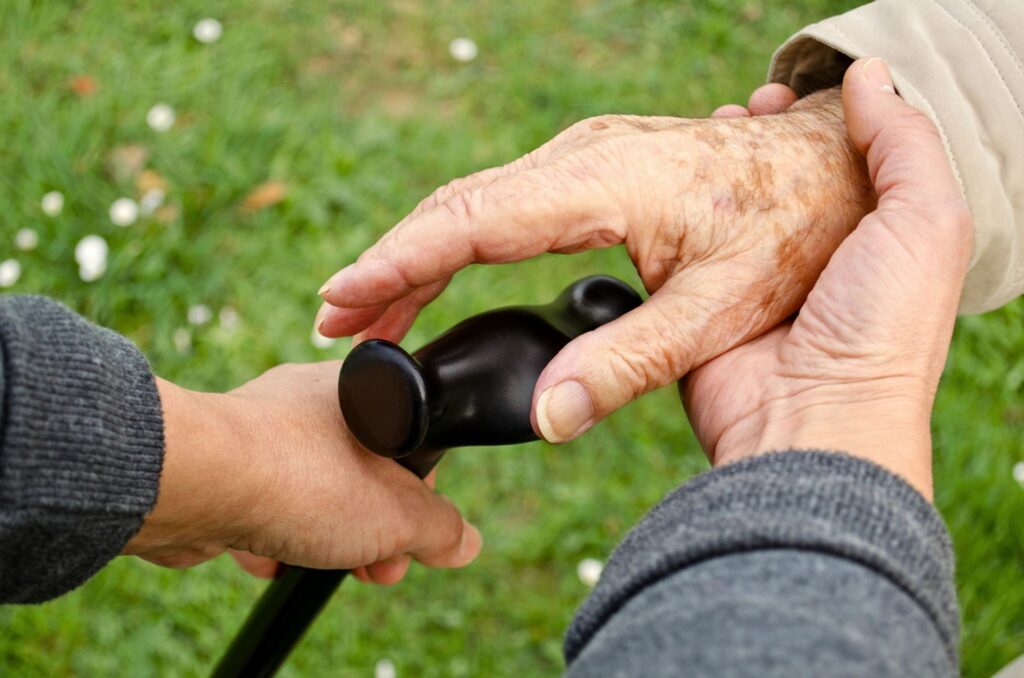
Key Highlights
- Respite care provides short-term relief for in-home hospice caregivers.
- It allows caregivers to tend to their own needs, preventing burnout and promoting well-being.
- Respite care can be provided in various settings, including inpatient facilities and in-home.
- Medicare and many insurance plans cover hospice respite care services.
- Talk to your hospice care team to explore respite care options and eligibility.
Introduction
Caring for a loved one through hospice care shows love and commitment. But being a main caregiver can be tough. It can drain you both physically and emotionally. Respite care provides a kind solution. It gives caregivers a break while ensuring their loved ones get good care. This guide will look into respite care in hospice. We will discuss its benefits and how to find this helpful support.
What is Respite Care in Hospice?

Respite care is an important part of hospice care. It gives family members and friends who care for a loved one near the end of life a short break. This time off helps caregivers rest and take care of their own needs. Taking a break can help stop caregiver burnout, which is when caregivers feel tired in body, mind, and spirit. This kind of exhaustion can hurt their health.
Respite care understands that caregivers are also going through a tough time and need help. By using respite care services, caregivers can return to caring for their loved ones feeling refreshed and ready. This helps them better deal with the challenges of end-of-life care.
Understanding Respite Care in Hospice
Respite care is not about leaving your loved one. It is about understanding that self-care is important for caregivers. When caregivers take care of themselves, they can provide better support.
With respite care, your loved one still gets great medical care and emotional support. They receive this care in a safe and comfortable place. This way, you can take a break, knowing that their well-being is in good hands with caring professionals.
Defining Respite Care Within Hospice Services
Respite care services are a key part of a complete hospice care plan. They are meant to give temporary relief to caregivers while keeping hospice patients well cared for. These services can differ based on patient needs and caregiver choices. They can include both inpatient options and care at home.
For caregivers needing a longer break, inpatient respite care can help. It gives a cozy environment where the loved one gets 24/7 medical care and emotional support. This allows caregivers to take longer vacations, join important events, or rest without worrying about their loved one’s needs.
In contrast, in-home respite care offers a more flexible choice. A trained professional visits the patient’s home. They provide companionship, help with daily tasks, and emotional support for a few hours or days each week.
The Role and Importance of Respite Care for Caregivers and Patients
Respite care is very important for both caregivers and patients with terminal illnesses. It gives caregivers a much-needed break from the hard tasks of caring for someone. This break can help prevent caregiver burnout. When caregivers feel good, they can offer better care and love to their family members.
For patients, respite care brings peace of mind. They have professionals who can give emotional support, personal care, and medical help. This way, patients can relax, knowing their needs are taken care of while their primary caregiver is on a break. Feeling secure can really help their emotional well-being.
Lastly, respite care helps create a better relationship between caregivers and patients. By reducing stress and preventing burnout, caregivers can spend time with their loved ones in a more positive way. This leads to deeper connections and meaningful moments during a tough time.
Benefits of Hospice Respite Care
Respite care offers many benefits for patients and caregivers. It gives caregivers a chance to take a break and relax. This helps them feel better and stay healthy while they take care of their loved ones. A little time away can lower stress, help with sleep, and stop burnout. This way, caregivers can be more focused and available for the people they care about.
For patients, respite care means their needs are taken care of while their main caregiver takes a needed rest. With the support from trained professionals, patients feel safe and comfortable. This support helps improve their overall well-being during this time.
Supporting Caregiver Well-being and Preventing Burnout
One of the best things about respite care is how it helps caregivers stay healthy and avoid burnout. Taking care of someone with a serious illness can really affect a person’s health. The endless demands of caregiving can lead to tiredness, lack of sleep, and forgetting to take care of one’s own needs.
Respite care gives caregivers a much-needed break. This allows them to focus on their own health and well-being. By stepping back, even for a little while, caregivers can enjoy fun activities, spend time with friends and family, and look after their own health.
Taking this time for self-care is not selfish. It is important for caregivers so they can keep giving good care to those they love. This time helps them come back feeling refreshed and ready to handle the tough parts of caregiving.
Enhancing Patient Care Through Professional Assistance
Respite care helps caregivers by giving them a break. This break not only supports the caregivers but also improves the care that patients get. While caregivers rest, trained nurses can take over. They can manage the patient’s symptoms and pay close attention to their needs.
These nurses provide the right medication, help with any pain or discomfort, and change the care plan if necessary. This way, the patient’s needs are met even without their primary caregiver present.
When family members get a break, they can return to caregiving feeling stronger and more energized. This fresh energy leads to more patience and kindness. As a result, the quality of care that patients receive becomes even better.
How to Access and Arrange for Hospice Respite Care
Accessing respite care usually starts with talking to your loved one’s hospice care team. They are very helpful in explaining the process, who is eligible, and what options are available. They can help you figure out the right type of respite care for your situation.
Don’t be afraid to ask questions or share your concerns. It’s important to let them know what you need. The hospice care team wants to support both patients and families. They are here to make this process easy and less stressful for everyone.
Navigating Medicare and Insurance Coverage
Understanding your insurance for respite care is important when you plan your care needs. Medicare benefits, especially Medicare Part A, usually cover a large part of hospice respite care costs for those who qualify. This often includes up to 5 consecutive days of respite care for each benefit period.
But, you should check the details of your coverage with your insurance provider. They can give you clear information on what you need to qualify, any fees you might have to pay, and any limits on how often or how long you can use respite care services.
Feel free to ask about your coverage options, deductibles, or co-payments. Knowing what you will pay in advance can reduce stress and help you plan your respite care better.
Steps for Planning Ahead with Your Hospice Provider
Planning for respite care in advance ensures a smoother experience for both you and your loved one. Start by engaging in open and honest conversations with your hospice provider about your needs. They can guide you through the process, addressing any questions you might have and helping you make informed choices.
Next, explore the available respite care options in your area. Determine whether inpatient respite care at a facility or in-home care best suits your loved one’s needs and preferences. Consider factors such as medical requirements, comfort levels, and the level of care required.
Finally, work with your hospice provider to develop a respite care plan that outlines your needs and preferences. This plan serves as a valuable roadmap, ensuring that everyone is on the same page and that your loved one’s care continues seamlessly during your time away.
| Step | Description |
| 1 | Initiate conversations: Discuss your needs and preferences openly with your hospice provider. |
| 2 | Explore Options: Research and compare different respite care providers and services in your area. |
| 3 | Develop a Plan: Work collaboratively with your hospice provider to create a comprehensive respite care plan. |
Conclusion
Respite care in hospice is very important. It helps both patients and caregivers. Caregivers get a much-needed break. This break helps stop burnout and keeps everyone well. Families can improve care for their loved ones by getting professional help and knowing about coverage options. Planning ahead with your hospice provider is key. It makes arranging respite care easier. Knowing the benefits and how to qualify for respite care can make difficult times better. If you think about hospice respite care, talk to your provider about options. This can help make caregiving easier.
Frequently Asked Questions
How Often Can Hospice Respite Care Be Used?
Medicare Part A usually pays for hospice respite care for up to five consecutive days during each benefit period. A benefit period lasts 90 days. The exact number of days and how often you can use this care may change based on your specific insurance plan and the rules of your hospice provider.
What Types of Respite Care are Available in Hospice?
The main types of respite care for hospice patients are inpatient care at a facility and home care. Inpatient care gives 24/7 medical care in a special place. Home care offers temporary relief to caregivers in the comfort of their home. Depending on where you are and the hospice provider, options like adult day care might also be available.
Who Qualifies for Hospice Respite Care?
Generally, people who can get hospice care can also receive respite care. This is because they meet the Medicare rules. They must have a terminal illness and likely live for six months or less. Your hospice team can offer tailored help based on your unique situation.
Are There Any Costs Associated with Hospice Respite Care?
Medicare and many insurance plans pay for a lot of respite care costs. However, you might still have to pay some extra money. This can include co-payments, deductibles, or services that your plan does not cover. It is a good idea to talk about any possible costs with your hospice provider and your insurance company.
How Do I Talk to My Hospice Provider About Respite Care Options?
Start a talk with your hospice provider about your need for respite care. Share your limits as a caregiver honestly. It’s good to involve your family in this chat. They can help you understand the respite care options. They can answer your questions and create a plan that fits your family and your loved one’s special needs.
Resources and References on Hospice and Respite Care
Below is a curated list of trusted resources that provide detailed insights into hospice and respite care, including their differences, benefits, and usage guidelines. These references aim to support caregivers, patients, and families in understanding and accessing the right care options.
- What Is Hospice Respite Care? – Compassus
- An overview of hospice respite care, its purpose, and how it benefits caregivers by providing temporary relief while ensuring patients receive professional care.
- Hospice Care at Home: Respite Care – VITAS Healthcare
- Explains how hospice respite care can be delivered at home, its role in caregiver support, and the types of services provided.
- What Is Hospice Respite Care? – Hospice Basics
- A simple and informative guide on what hospice respite care entails and how to access it for loved ones.
- The Difference Between Hospice Care and Respite Care – Hospice Care of Georgia
- Compares hospice and respite care, highlighting their distinct purposes and when each type of care is appropriate.
- How Often Can You Use Respite Care in Hospice? – Care Indeed
- Details on the frequency and guidelines for utilizing respite care services within hospice programs.
- What Is Respite Care? – National Institute on Aging (NIA)
- Comprehensive information on respite care options, their benefits, and tips for choosing the right service.
- What Is the Difference Between Hospice and Respite Care? – Buckner Parkway Place
- Explores the differences and interconnections between hospice and respite care, emphasizing their roles in patient and caregiver support.
- Hospice Caregiver Support: Hospice Respite Care – Crossroads Hospice
- Provides resources for caregivers, with a focus on the role of respite care in maintaining caregiver well-being.
- What Is the Difference Between Hospice and Respite Care? – Buckner Villas
- Another insightful resource distinguishing between hospice and respite care, tailored for caregivers and families.






